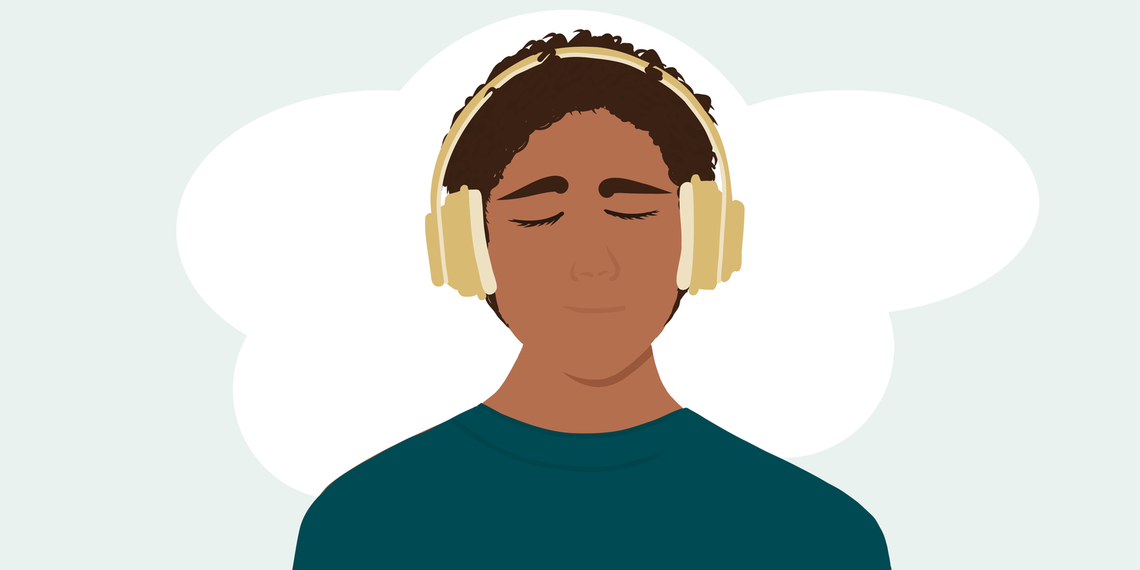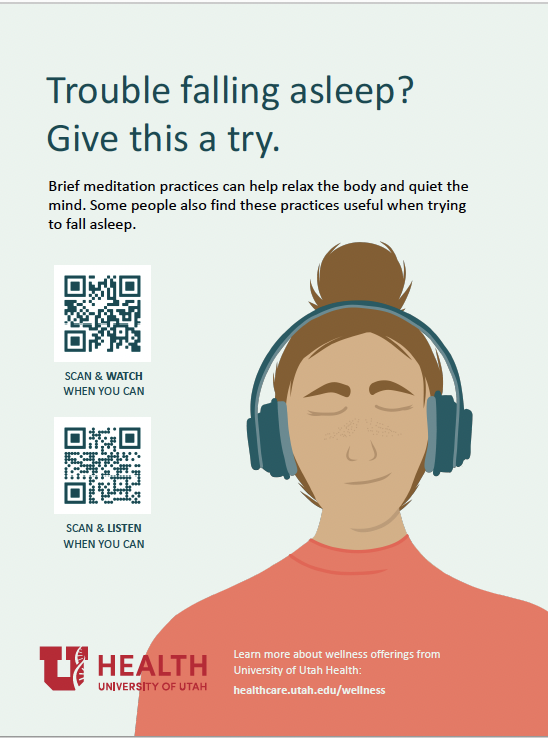grew up in Murfreesboro, Tennessee, deep in the “Bible Belt”. Concepts like mindfulness weren’t common in middle Tennessee and they weren’t necessarily celebrated in my family either. My grandfather was a Methodist preacher, and he didn’t want my grandmother to practice yoga because he worried that it was some kind of slippery slope toward an undesirable place. That stigma against meditative practice and mindfulness was pervasive, and some people still feel that way about it today.
But I’ve always been interested in it. My mom gave me the Bhagavad Gita (a prominent Hindu text) and Daoist texts to read as a teenager. I also found that there were Christian forms of meditation. I read about these different techniques, but I wasn’t actively practicing any form of mindfulness at the time.
It was during my short career playing semi-professional basketball in Finland that I really started exploring how mindfulness and meditation could improve my mental health and basketball skills. I wasn’t so much interested in the mysticism that can surround these practices. It was their application that most intrigued me. Some of my earliest research was incorporating mindfulness into daily life; for example, trying to turn dishwashing into a rejuvenating or meditative experience. In graduate school I connected with a professor who was doing a lot of research around mindfulness and how it could improve patient care, and for me that was a natural fit.
A Trojan Horse for treating pain
When I came to University of Utah Health, several of the providers and staff across the organization were looking at ways to incorporate mindfulness into different care settings. We started finding ways to slip it into existing care pathways—kind of like a “Trojan Horse” for managing and reducing pain—without adding more work for providers or patients.
We published the results of a study with patients at Huntsman Cancer Institute seeking osteopathic manipulation treatment (OMT). When patients checked in, they got a tablet and headphones. One group listened to an eight-minute guided meditation. The other listened to eight minutes of me talking about the history of osteopathic medicine. The patients who listened to a mindfulness meditation prior to their OMT reported higher levels of embodied safety (feeling safe in their own body) and higher satisfaction after the visit.
In another study, we randomly assigned patients to one of three preoperative mind-body therapies before total joint arthroplasty (hip or knee replacement surgery) at the University of Utah Orthopaedic Center:
- Mindfulness meditation
- Hypnotic suggestion
- Cognitive-behavioral pain psychoeducation
We found that both mindfulness and hypnotic suggestion immediately decreased pain and anxiety. But, mindfulness also reduced patients’ desire for pain medication before the surgery, and improved their physical function after surgery. Surprised by the long-term effects of such a brief mindfulness training, we did a follow-up study and again found preoperative mindfulness training improved patients’ postoperative outcomes.
In a fourth study, we examined the effect of coupling an 8-week mindfulness program developed at the University of Utah by Dr. Eric Garland, Mindfulness-Oriented Recovery Enhancement (MORE), with methadone maintenance treatment (MMT) for opioid disorders. Patients that received MORE plus MMT had significantly fewer days of illicit drug use and fewer cravings throughout the 16-week follow-up. MORE also decreased pain, depression, and anxiety. So, the benefits of mindfulness appear to extend beyond a single practice or training program, and beyond pain. In fact, in the largest study of MORE to date, MORE was found to simultaneously decrease pain and opioid misuse 9 months after treatment ended.
How to translate these results into your practice
There are a few different ways this can work in practice. You can either directly facilitate mindfulness practice with patients or create ways for them to engage with it on their own.
Anyone can facilitate this type of practice. We have primarily worked with social workers and mental health professionals in our studies, but any care professional can do it—physicians, nurses, physical therapists and even staff members who work in health care settings.
The key ingredients for success are empathy and the ability to listen. Many people enjoy mindfulness practice, but every mindfulness practice doesn’t automatically make someone feel relaxed and happy. Health care professionals are ideally suited to listen and deconstruct what’s happening with each patient, then guide them toward a more fulfilling mindfulness practice. For example, patients with chronic or debilitating pain might actually feel more or worse pain when they focus directly on their body.
The provider can use that information to help the person understand how powerful their mind is and try to redirect their focus in ways that lessen pain.
Busy clinics can also use these techniques, even without someone to specifically guide the practice. That might be as simple as providing a tablet and headphones, or a QR code for patients to scan where they can listen on their own devices while they sit in a waiting room prior to an appointment. Many patients are already looking for ways to distract themselves in a waiting room. These things provide a way to redirect their time toward something that might improve their care experience.
There are also some misconceptions that you need to have long mindfulness meditations to make a difference. But in our studies, we found that even mindfulness sessions as short as 90 seconds or three minutes could make a difference. A little mindfulness can go a long way
U of U Health - Mindfulness Classes
Audio & Video Guides:
Adam Hanley
The U of U Health Resiliency Center shares a growing list of resources you and your team can use to continue building resilience together.
For the past six years, mindfulness, professional well-being, equity and inclusion expert Trinh Mai has served as a contributor and core member of Accelerate’s editorial team. Now, as she charts a new path, we reflect with profound gratitude on everything she has taught us.
How do I share employee engagement feedback with my team? Chief Wellness Officer Amy Locke, Resiliency Center director Megan Call, Utah Health Academics HR leader Sarah Wilson, and Organizational Development Director Chris Fairbank explain when and how to talk with your team.

